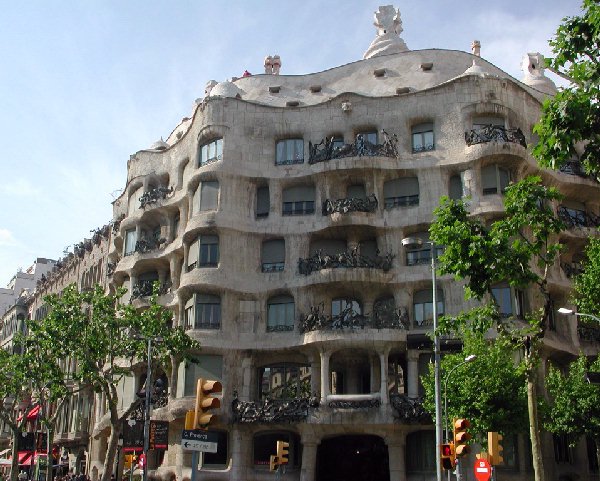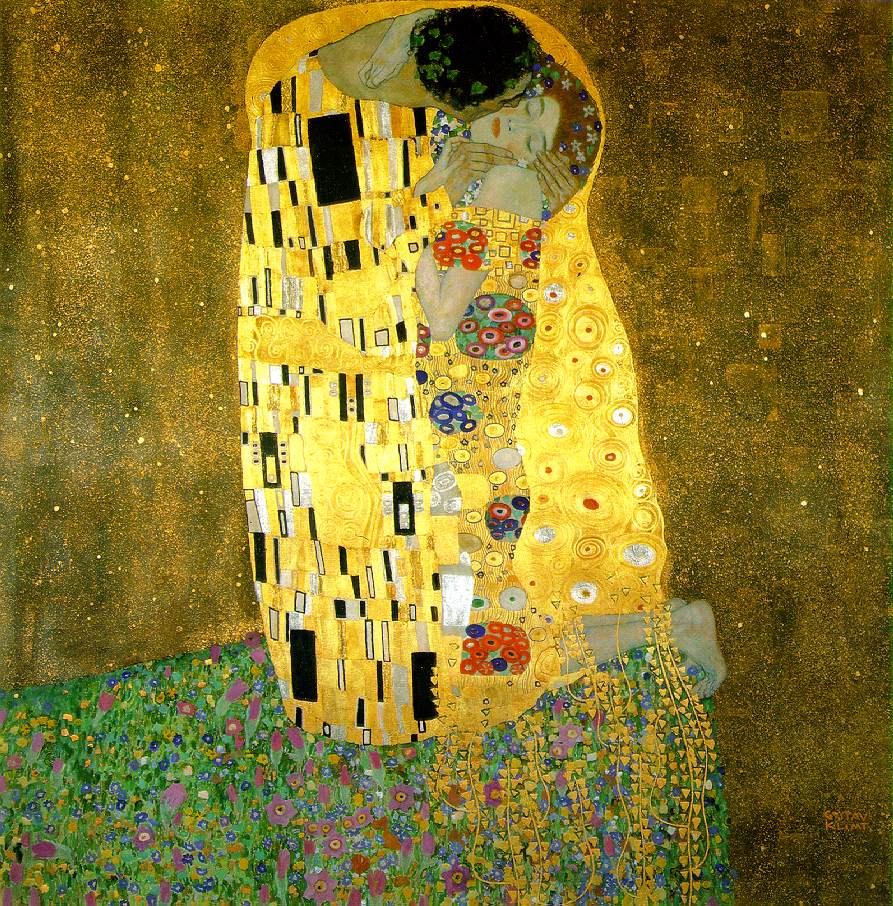 |
||||
|
Art Nouveau
Art Nouveau, also known as the "New Art," was a highly influential artistic movement that emerged in the late 19th century and reached its peak around the turn of the 20th century. It was characterized by its organic, curvilinear forms inspired by natural elements and a desire to integrate art into all aspects of life. The movement encompassed various art forms, including paintings, architecture, and design, and its distinctive style had a profound impact on the art world. In painting, Art Nouveau artists sought to break away from the academic traditions of the time and explore new possibilities of expression. They embraced the idea of total artistic freedom and incorporated innovative techniques and subject matters. Painters of the movement often depicted the beauty of nature, emphasizing the sinuous lines and flowing forms found in plants, flowers, and other organic shapes. Gustav Klimt, a prominent Art Nouveau painter, is renowned for his sensual and ornamental works that often featured intricate patterns, gilded accents, and mysterious, allegorical figures. Architecture played a crucial role in the Art Nouveau movement, with architects aiming to create harmonious, unified environments that integrated art into everyday life. The style emphasized asymmetrical designs, elaborate ornamentation, and the use of natural materials such as iron, glass, and ceramic tiles. One of the most iconic examples of Art Nouveau architecture is the Casa Batllo in Barcelona, designed by Antoni Gaudi. The building showcases undulating lines, colorful mosaics, and a whimsical façade, reflecting the movement's desire to blur the lines between architecture and art. In the realm of design, Art Nouveau revolutionized the aesthetic of everyday objects. Artists and designers sought to create a total work of art, or Gesamtkunstwerk, by infusing beauty and artistic expression into all aspects of life, from furniture and textiles to jewelry and decorative arts. The style is characterized by its ornate, flowing lines, intricate patterns, and a preference for stylized, organic motifs. Rene Lalique, a master glassmaker, produced exquisite glassware and jewelry characterized by delicate, naturalistic forms and the innovative use of materials such as opalescent glass. Art Nouveau became a global phenomenon, with variations and interpretations emerging in different countries. In France, it was known as "Art Nouveau," while in Germany, it was called "Jugendstil," and in Austria, it was referred to as the "Vienna Secession." Despite regional variations, the movement shared a common ethos of rejecting historicism and embracing modernity. The Art Nouveau movement left a lasting impact on the art world and paved the way for modern design and architecture. Its emphasis on organic forms, decorative unity, and the integration of art into everyday life challenged the traditional boundaries of art and set the stage for the emergence of new artistic movements in the 20th century. Today, the legacy of Art Nouveau can still be seen in the works of contemporary artists and designers who continue to draw inspiration from its innovative and captivating aesthetic.
Five of the Greatest Examples of Art NouveauBelow are five examples showcase the diversity and artistic brilliance of Art Nouveau, highlighting the movement's emphasis on organic forms, decorative unity, and the integration of art into various artistic mediums. These five pieces are often considered to be among the best representations of the art movement.
"The Kiss" by Gustav Klimt: Created between 1907 and 1908, "The Kiss" is an iconic painting that epitomizes the sensual and ornamental style of Art Nouveau. The painting depicts a couple locked in an intimate embrace, enveloped in intricate patterns and gold leaf, showcasing Klimt's mastery of decorative elements and symbolism. Casa Batllo by Antoni Gaudi: Located in Barcelona, Spain, Casa Batllo is a remarkable architectural masterpiece that showcases Gaudi's innovative approach to Art Nouveau. The building features undulating lines, colorful mosaics, and a fantastical facade inspired by marine motifs. It exemplifies the integration of art and architecture, blurring the boundaries between the two. "The Peacock Skirt" by Aubrey Beardsley: Created in 1893, "The Peacock Skirt" is a black and white illustration that captures the essence of Art Nouveau's linear elegance. Beardsley's intricate, sinuous lines depict a woman wearing a peacock feather patterned skirt, exuding a sense of delicate beauty and sensuality. "Victor Horta's Tassel House" in Brussels: Designed by Victor Horta, a renowned Belgian architect, the Tassel House is often considered the first true Art Nouveau building. Constructed in 1893, it exhibits Horta's innovative use of iron and glass, organic motifs, and the integration of art into the overall architectural design. "The Seasons" by Alphonse Mucha: Alphonse Mucha was a prominent Czech artist associated with the Art Nouveau movement. His series of decorative panels titled "The Seasons" (1896) became iconic representations of the movement. Each panel represents a different season, featuring elegant, elongated female figures surrounded by elaborate floral patterns, symbolizing the connection between nature and human life.

History and Traits of the Art Nouveau MovementArt Nouveau was a movement in the history of design that emerged in late 19th century France. Art Nouveau translates from French to "new art". The style became popular all across Europe and could be seen in jewelry, architecture, furniture, art, posters and textiles. It was also known as "Jugendstil" or youth style in Germany, "Stile Liberte" in Italy, "Sezessionstil" or secession style in Austria and more. Artists like Alphonse Mucha became popular for creating postcards, paintings, illustrations and advertisements in the Art Nouveau style. Art Nouveau first emerged from some artists feeling restricted by the academic style of art that had been reigning for decades. Towards the end of the 19th century, artists felt the need to break away from the industrial age of machinery to explore a more stylized and sensual style with organic and highly decorative forms. It was popularized by Maison de l'Art Nouveau, a famous art gallery operated by Siegfried Bing. The influence of the Art Nouveau style is omnipresent and can still be seen in many places today. Like every other design movement, Art Nouveau had some distinctive traits that made it stand out from other styles. It did not borrow from earlier movements and formed a path inspired by the natural world. Bold Lines The Art Nouveau style of art is known for its use of strong lines. The designs can contain anything from conservative linear lines to long, curvy and luxurious lines to the whiplash line. Plants and Flowers Another recurring trait is the stylized presence of plants and flowers. The artists took the liberty of being inspired by their surroundings and made it their muse. Stylized plants, flowers, leaves, roots, twigs and buds can all be found in Art Nouveau designs. The Female Form An emphasis on the female form can also be seen. Usually, women in Art Nouveau designs were depicted in a traditional manner with long, flowing locks. This type of form can also be considered pre-Raphaelite. Flourishes and Ornamentation Furnishings and interior decor saw the incorporation of design flourishes and ornamentation such as exotic wood material, silver, marquetry, iridescent glass and semi-precious stones. The rebellion of Art Nouveau also spread through architecture that included asymmetrical facades, use of polychrome ceramic tiles, flower, plants or animal shaped ornamentations and parabolas in windows, doors and arches. Similarly, jewelry saw a move past traditionally used diamonds to stones like agate, moonstone and aquamarine. Female faces and bodies were also often featured in the jewelry. For such a defining movement, it actually lasted only for a short time. It was mostly prominent from its rise in the last decade of the 19th century to about 1910, that is, the first decade of the 20th century. Other powerful movements like Art Deco were influenced by the Art Nouveau movement. It helped usher in modernism in graphic design. The style is being revisited by contemporary designers to introduce a romantic and emotive quality to their work.
|
|
|||
|
|
||||
The Origins, Characteristics and Decline of Art NouveauArt Nouveau was a style of art that was popular in Europe and the United States from around 1890 to 1910. It was characterized by its use of long, curving lines inspired by nature. This style was seen in architecture, interior design, jewelry, glass design, posters, and illustrations. Art Nouveau aimed to create a new and original style that broke away from the imitations of past art and design. The term "Art Nouveau" was coined in Belgium and France to describe the work of different artist groups. In Germany, it was called "Jugendstil," while in Austria it was known as "Sezessionstil." Italy referred to it as "Stile Floreale" or "Stile Liberty," and in Spain, it was known as "Modernismo" or "Modernista." In England, the immediate influences on the Art Nouveau style were the Aestheticism of Aubrey Beardsley, who focused on expressive organic lines, and the Arts and Crafts movement of William Morris, who emphasized the importance of a vibrant style in applied arts. In Europe, Art Nouveau was influenced by the expressive line experiments of painters like Paul Gauguin and Henri de Toulouse-Lautrec. The movement was also inspired by the linear patterns found in Japanese prints. The defining characteristic of Art Nouveau is its flowing and asymmetrical lines, often resembling natural objects like flower stalks, vine tendrils, or insect wings. These lines can be elegant, graceful, or even powerful and rhythmic. In graphic arts, the line takes precedence over other elements such as form, texture, space, and color, creating a decorative effect. In architecture and other visual arts, the organic, linear rhythm engulfs the entire three-dimensional form, merging structure and ornamentation. This approach contrasts with traditional architectural values of structure clarity and reason. Numerous artists and designers worked in the Art Nouveau style. Some notable figures include Charles Rennie Mackintosh, a Scottish architect and designer known for geometric lines; Henry van de Velde and Victor Horta, Belgian architects whose delicate structures influenced Hector Guimard in France; Louis Comfort Tiffany, an American glassmaker; Louis Majorelle, a French furniture and ironwork designer; Alphonse Mucha, a Czechoslovakian graphic designer and artist; René Lalique, a French glass and jewelry designer; Louis Henry Sullivan, an American architect who used Art Nouveau ironwork in his buildings; and Antonio Gaudí, a Spanish architect and sculptor known for his unique organic constructions. By 1910, Art Nouveau fell out of favor and was considered outdated and limited as a decorative style. However, in the 1960s, it experienced a revival through major exhibitions that brought attention to its significance as a Modern art movement. It was later incorporated into Pop and Op art. In popular culture, the floral and organic lines of Art Nouveau resurfaced in a psychedelic style seen in fashion, typography on album covers, and commercial advertising.
|
||||

